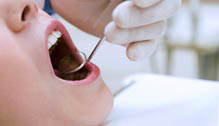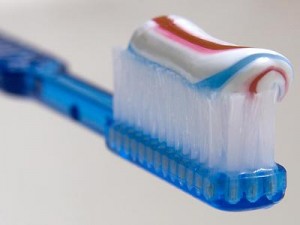Lifelong protection against tooth cavitiesresults from continuous use of low-concentration fluoride. When communal-water supplies are available, water fluoridation clearly represents the most effective, efficient, and economical of all known measures for the prevention of tooth decay. Unfortunately, fluoride in water is available to only about two-thirds of the population. Thus it is obvious that additional measures by the dental profession are needed to provide greater protection against cavities. Continue reading
Tag Archives: fluoride
What Is Dental Fluoride?
Fluoride is widely used to prevent cavities or tooth decay. The cavity reduction that has been achieved by the use of fluoride has been a major public health accomplishment. However the use of fluoride has been subjected to dissent by anti-fluoride organizations for its side effects. But before you join en-masse, you should know the importance and safety precautions of fluoride, then decide for yourself whether you could benefit from using fluoride. Continue reading
How Does Toothpaste Work?
Dentifrices and mouthrinses are the major products for routinely administering effective cosmetic and therapeutic agents in the mouth. These products are the most widely used by consumers, generating the largest sales of all dental products. Besides attempting to prevent tooth decay, it is also becoming increasingly common for manufacturers to add therapeutic or preventive agents to reduce gum disease (gingivitis) and tartar (calculus) formation. A few toothpastes also contain desensitizing agents. Continue reading
Fluoride toothpaste
Does your dentist always remind you to use fluoride toothpaste? Many of us are aware of the  importance  of using an appropriate toothpaste but little do we know about the ingredients in the  toothpaste which protects our tooth from dental decay. There are several components in a  toothpaste which help in protecting the tooth: Continue reading
How to Use Fluoride Therapy to Prevent Cavities
Fluoride is available in many ways:
1. Through water fluoridation.
Water fluoridation is listed as one of the ten great public health achievements of the 20th century by U.S Centers for Disease control as it is a feasible way to introduce fluoride to the public. Although there may be different opinions regarding to adding fluoride to our water but it is undeniable that water fluoridation is an inexpensive and feasible way especially to people which stay in rural areas and fluoridated water might be the only source of fluoride. Continue reading
How Can I Care for My Sensitive Teeth?
 When you experience sensitive teeth, the first consideration should be to determine the cause of the pain since it may be difficult to differentiate between sensitive teeth or dentin hypersensitivity and a variety of other tooth pains and discomforts. Dentin or pulpal pain (caused by a noxious agent, i.e. dental caries) can be intensified by thermal change, sweet, and sour, all of which could elicit a hypersensitivity reaction as well. A differential diagnosis to rule out other conditions must be established before resorting to treatment. Diagnostic aids include history of pain, percussion and palpation tests, inspection of the teeth and surrounding tissues, thermal and electric pulp tests, and radiographic examination. Once other causes for tooth pain have been ruled out, and dentin hypersensitivity has become the established diagnosis, an individualized management strategy with suitable treatment recommendations should be developed to address your specific needs.
When you experience sensitive teeth, the first consideration should be to determine the cause of the pain since it may be difficult to differentiate between sensitive teeth or dentin hypersensitivity and a variety of other tooth pains and discomforts. Dentin or pulpal pain (caused by a noxious agent, i.e. dental caries) can be intensified by thermal change, sweet, and sour, all of which could elicit a hypersensitivity reaction as well. A differential diagnosis to rule out other conditions must be established before resorting to treatment. Diagnostic aids include history of pain, percussion and palpation tests, inspection of the teeth and surrounding tissues, thermal and electric pulp tests, and radiographic examination. Once other causes for tooth pain have been ruled out, and dentin hypersensitivity has become the established diagnosis, an individualized management strategy with suitable treatment recommendations should be developed to address your specific needs.
There are numerous treatment strategies and interventions to manage tooth sensitivity. In addition to pain control, long-term management is most successful when treatment strategies include the elimination or reduction of contributing factors. Sensitive teeth are best managed through self-care, professional care, or a combination of the two. Exposed dentin surfaces that do not elicit pain need only be monitored and treated as needed to reduce tooth decay risk. Continue reading



